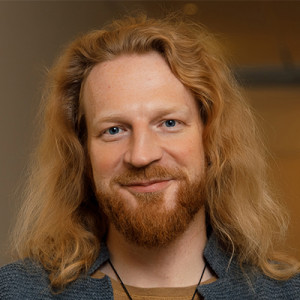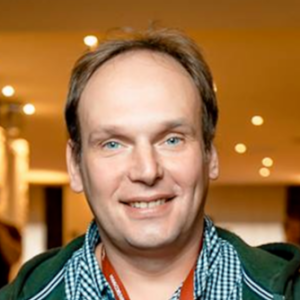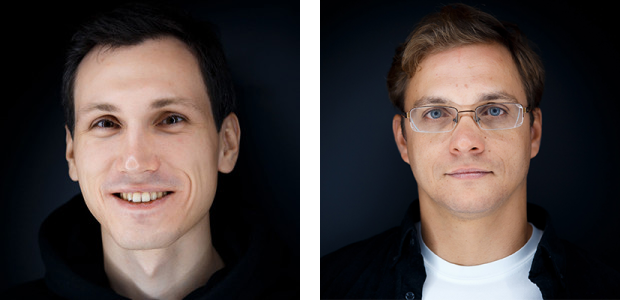JPoint 2019: free live stream, party, and more
April 5-6, that is, this weekend already, JPoint 2019 will be held - an international Java conference for experienced Java developers.
If you could not participate, live or online, then we have a surprise: free broadcast of the first hall. More precisely, the first day and the first hall + keyout of the first day. About why we even watch the broadcast, we have a separate post .
So on April 5, you will need to wake up at 9:30 am (Moscow time) and follow the link under the cut. In the same place, under the cut, we will discuss what is there at the conference, which is not on the broadcast.

Where to take the broadcast
The broadcast page is waiting for this red button link:

In the presence of a video player and the program of the first hall. The player will come to life only on the morning of the fifth of April, now it shows nothing.
Reports
 It all starts with the keynote of Anton Keks "The world needs full-stack craftsmen" about the fact that a real master is much more efficient than a highly specialized developer: he not only writes code, but also solves problems. Anton is one of the founders of Codeborne, a company that actually uses the principles of extreme programming, such as pair programming.
It all starts with the keynote of Anton Keks "The world needs full-stack craftsmen" about the fact that a real master is much more efficient than a highly specialized developer: he not only writes code, but also solves problems. Anton is one of the founders of Codeborne, a company that actually uses the principles of extreme programming, such as pair programming.
 The second report is from Yegor Bugaenko ( yegor256 ). Egor is a person for whom we once invented a special designation in the program, meaning hot fried questions. This time, he will tell the topic more relaxed, but no less important: in the report “Testing Miscalculations” he will take to compare several existing methods, arrange their analysis and assess the effectiveness from a practical point of view.
The second report is from Yegor Bugaenko ( yegor256 ). Egor is a person for whom we once invented a special designation in the program, meaning hot fried questions. This time, he will tell the topic more relaxed, but no less important: in the report “Testing Miscalculations” he will take to compare several existing methods, arrange their analysis and assess the effectiveness from a practical point of view.
 In the third report, “Reactive programming: lessons” , Tomasz Nurkiewicz will tell you how to determine whether reactive domain is your chance for a brighter future, or vice versa, a short one-way trip. And he is a Java Champion and one of the best bloggers on DZone. JPoint has been visited by enough title holders like Java Champion, but nonetheless.
In the third report, “Reactive programming: lessons” , Tomasz Nurkiewicz will tell you how to determine whether reactive domain is your chance for a brighter future, or vice versa, a short one-way trip. And he is a Java Champion and one of the best bloggers on DZone. JPoint has been visited by enough title holders like Java Champion, but nonetheless.
 Looking at the topic “Bulletproof Java Enterprise Applications for the Hard Production Life”, you can unmistakably guess the author. Sebastian - Lead Java Developer Advocate at IBM, he talks a lot about how to live with JavaEE happily and efficiently, and really participates in development, improving our lives. With Sebastian Dashner we recently did an interview on Habr. Do you use JavaEE and MicroProfile? That way. Do not use - also it does not hurt to listen.
Looking at the topic “Bulletproof Java Enterprise Applications for the Hard Production Life”, you can unmistakably guess the author. Sebastian - Lead Java Developer Advocate at IBM, he talks a lot about how to live with JavaEE happily and efficiently, and really participates in development, improving our lives. With Sebastian Dashner we recently did an interview on Habr. Do you use JavaEE and MicroProfile? That way. Do not use - also it does not hurt to listen.
 The next report, “We are Spring Boot, and we are getting stronger: the intolerable ease of AOT-compiling Spring-applications” by Nikita Lipsky ( pjBooms ) plunges us into the depths ahead of time compilation. Recently, the AOT theme has become very popular, but how can it be combined with the world of dynamic frameworks like Spring? Someone even thinks that this is impossible. But nothing is impossible for Nikita, one of the initiators of the Excelsior JET project, the most famous Java virtual machine, where AOT "just works." And by the way, he also has an interview in Habré .
The next report, “We are Spring Boot, and we are getting stronger: the intolerable ease of AOT-compiling Spring-applications” by Nikita Lipsky ( pjBooms ) plunges us into the depths ahead of time compilation. Recently, the AOT theme has become very popular, but how can it be combined with the world of dynamic frameworks like Spring? Someone even thinks that this is impossible. But nothing is impossible for Nikita, one of the initiators of the Excelsior JET project, the most famous Java virtual machine, where AOT "just works." And by the way, he also has an interview in Habré .
 And concludes the broadcast of “Reactive or not reactive, that is the question” - a report by Kirill Tolkachev ( tolkkv ) and Evgeny Borisov ( EvgenyBorisov ). They will take some kind of application and try to refactor it in a reactive style, revealing the features of things like the Spring Web Reactive Framework. It sounds very simple and straightforward, but as we know, their reports are among the best in ratings, attendance and study. I recommend to take a look at the previous megadlad "Boot yourself, Spring is coming" (in two parts: one , two ) - one of the few for which two time slots were reserved in a row. The links have both video and text decoding, but I strongly advise you to watch the video, because the presentation method matters.
And concludes the broadcast of “Reactive or not reactive, that is the question” - a report by Kirill Tolkachev ( tolkkv ) and Evgeny Borisov ( EvgenyBorisov ). They will take some kind of application and try to refactor it in a reactive style, revealing the features of things like the Spring Web Reactive Framework. It sounds very simple and straightforward, but as we know, their reports are among the best in ratings, attendance and study. I recommend to take a look at the previous megadlad "Boot yourself, Spring is coming" (in two parts: one , two ) - one of the few for which two time slots were reserved in a row. The links have both video and text decoding, but I strongly advise you to watch the video, because the presentation method matters.
Total: Full stack, Java Enterprise, Reactive, Spring, AOT, and even a report from Egor (not about OOP). That's all it takes to have a great Friday.
If you want to get access to all reports in general (not only to the first hall) on Friday and Saturday, then you can purchase an Online ticket . In addition, so you will have all the videos of what happened.
Not everything is available in the broadcast.
At the time of publication of the article, you still have two days to agree on a ticket with the employer and get something from the following:
Discussion areas
After each report, the speaker goes to a dedicated discussion area, where you can talk with him and ask your questions. Formally, this can be done in a break between reports. Although speakers are not required, they usually stay much longer - for example, for the duration of the next report. Sometimes it makes sense to skip the report from the main program (if you bought a ticket, you will still have records after filling out the feedback) and spend it on focused communication with an important expert.
Four BOF sessions
BOF is now a traditional format at our conferences. Something like a round table or discussion group in which everyone can take part. This format historically goes back to the first informal discussion groups of the Internet Engineering Task Force (IETF) . There is no division into a speaker and a participant: everyone participates on a par.
At the moment, as many as four topics are planned: microservices, reactivity, performance, and various JDK assemblies.
Exhibition area
In addition to the discussion areas during the break, you can visit the exhibition area. There are several main activities:
- The exhibition is a zone of stands of partner companies of the conference. You can learn about interesting projects, technologies and teamwork leaders of the IT-industry. This is the place where you and the company can find each other. Please note that there will be representatives from companies that you will not meet face to face with every day (for example, Amazon).
- Demo Stage is a dedicated stage for sponsors and partners, where companies make their reports, share practical experience and sum up the draws. The program can be viewed on the website if you go to the section with the program and set the “Demo Stage” switch to the appropriate position.
Podcasts and communities
JPoint is the largest Java conference in Russia, and it is quite logical that all the color of Java communities and podcasts appear on it. At a minimum, there will be Andrey Kogun ( AKogun47 ) from JUG.MSK, from “Debriefing” will be Anton Arkhipov, Cyril Tolkachev ( tolkkv ), Alexey Abashev, from JUG.ru it will be possible at times to intercept me ( olegchir ), and so on. And of course, we will conduct interviews not only with Zhenya ( phillennium ), but also Anton Chernousov, better known as golodnyj .
Party with beer and music
In parallel with the BOFs, a party starts at the end of the first day. Drinks, snacks, music - all at once. You can chat in an informal setting and discuss everything. You can move from bof to party. You can move from a party to a bof.
Brainwashing
Brainstorming is a bar quiz of questions and answers. More than 200 cities in 16 countries of the world play the Brainworld! To participate you need only wit and ingenuity. Questions are selected so that all participants feel the excitement and confidence in their abilities. In simple words - you gather a team of friends and colleagues, come to the party and have a great time.
Next steps
- If you go to a free broadcast: you need to follow the link on Friday, April 5th. The broadcast will begin around 9:30 am Moscow time.
- If you want to get access to all reports and records after the conference: you need to purchase an online ticket .
- If you change your mind and go live: there are a couple of days to confirm it with the employer or to buy a personal ticket, all possible options - by reference .
')
Source: https://habr.com/ru/post/446490/
All Articles